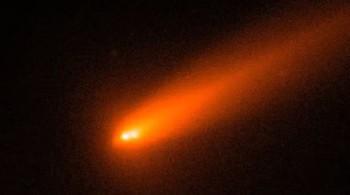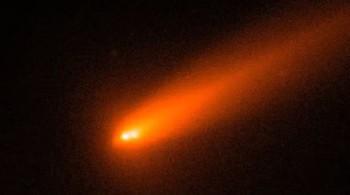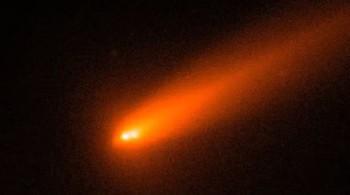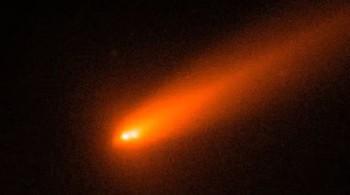
Comet C/2025 K1 (ATLAS) breaks into 3 after coming close to Sun
The fascinating world of astronomy has once again left us in awe, as a recent comet sighting has revealed a remarkable and rare phenomenon. Comet C/2025 K1 (ATLAS), a celestial body that has been under observation by astronomers, has broken into three distinct pieces after swinging too close to the Sun. This extraordinary event has been captured using Italy’s Copernicus telescope, providing scientists with a unique opportunity to study the comet’s behavior and composition.
The comet’s journey began like any other, with astronomers tracking its path as it approached the inner solar system. However, as it drew closer to the Sun, the comet’s nucleus became unstable, ultimately leading to its fragmentation. This process, known as “comet splitting,” is not uncommon, but it is still a relatively rare occurrence that provides valuable insights into the structure and composition of comets.
According to reports, the comet’s nucleus broke into three distinct pieces, with two larger chunks drifting approximately 2,000 kilometers apart from each other. A smaller, third piece was observed to the left of the pair, highlighting the complex and dynamic nature of comet fragmentation. This event is a testament to the dynamic and unpredictable nature of our solar system, where celestial bodies are constantly interacting and influencing each other.
The comet’s close encounter with the Sun, which occurred on October 8, is believed to have triggered the instability that led to its fragmentation. As the comet approached the Sun, the intense heat and radiation caused the ices on its surface to vaporize, creating a massive amount of gas and dust. This process, known as “outgassing,” can lead to a buildup of pressure within the comet’s nucleus, ultimately causing it to break apart.
The observation of Comet C/2025 K1 (ATLAS) using Italy’s Copernicus telescope has provided scientists with a unique opportunity to study the comet’s behavior and composition. By analyzing the images and data collected during this event, researchers can gain a better understanding of the comet’s structure, including its size, shape, and composition. This information can be used to improve our understanding of comets and their role in the formation and evolution of our solar system.
The study of comets like C/2025 K1 (ATLAS) is also important for understanding the potential risks and benefits associated with these celestial bodies. Comets are known to have delivered water and organic molecules to Earth in the past, providing a possible explanation for the origins of life on our planet. However, comets can also pose a threat to our planet, as their orbits can bring them into close proximity with Earth, potentially leading to catastrophic collisions.
In conclusion, the breaking of Comet C/2025 K1 (ATLAS) into three pieces after its close encounter with the Sun is a remarkable and rare phenomenon that has provided scientists with a unique opportunity to study the comet’s behavior and composition. As we continue to explore and understand the complexities of our solar system, events like this remind us of the awe-inspiring beauty and complexity of the universe we inhabit.




